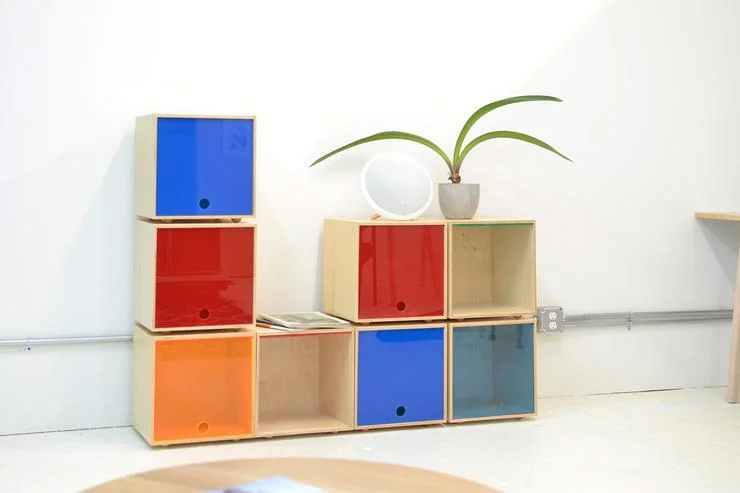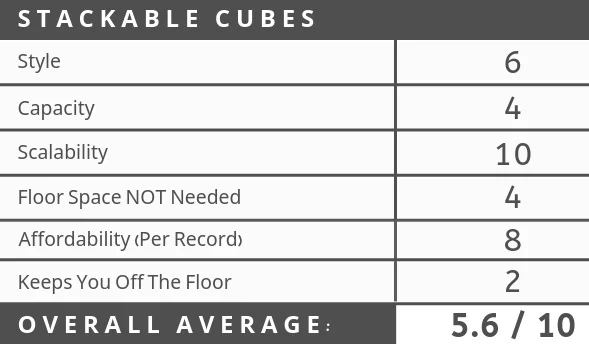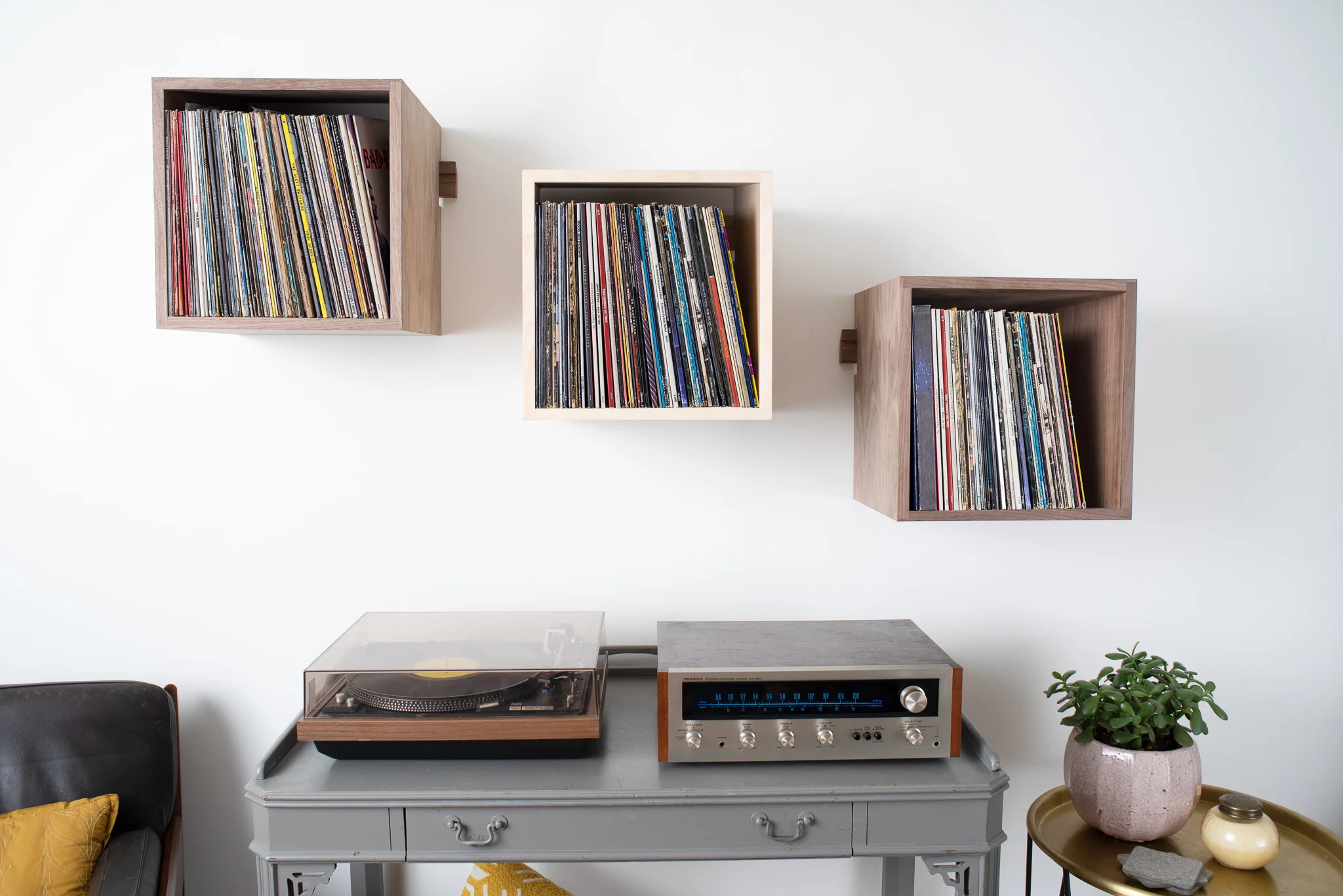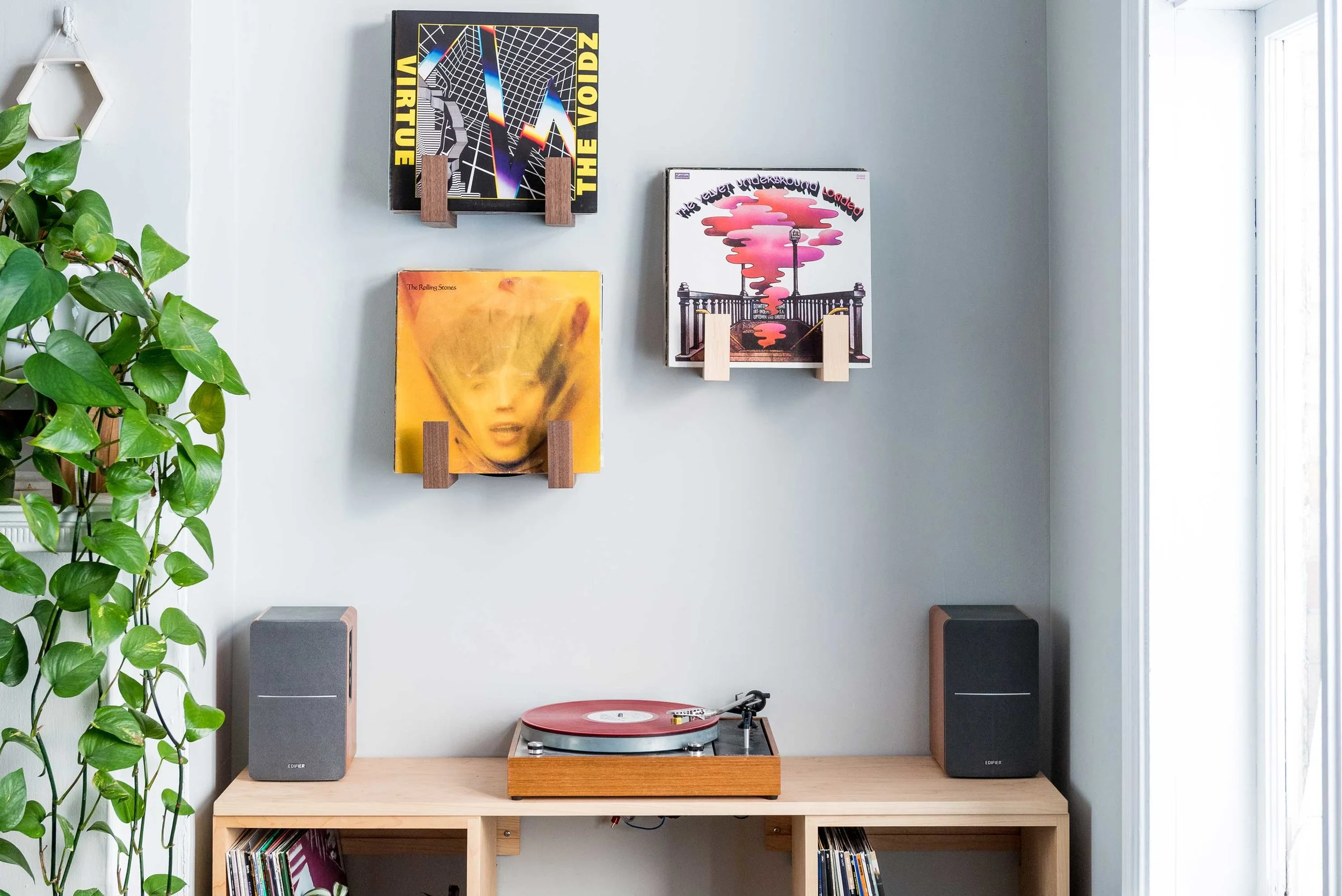What's The Best Way To Store My Records? Here's How The Options Stack Up

If you’ve got records, you need to put them somewhere. You may start out stacking them next to your record player or leaning them up against your shelves. But as your collection grows, you will want to get organized.
What’s the big deal about vinyl storage?
Most of the storage game is down to taste, convenience, and the size of your collection. But there are a couple of basic principles you want to follow to keep your vinyl playable. First, keep your records in their sleeves to protect from dust, dirt, and scratches that will make for crackly playback. Second, keep them as upright as possible to avoid warping. DO NOT stack your records flat, like pancakes. The uneven weight distribution can cause warping at points of high pressure, Vinyl Me Please explains. And if you need to lean your records up against something to keep them from falling over, lean them as steeply as you can, and avoid leaning too many up against each other at once. The records at the end of the stack can bow and warp. So, basically, keep your records in vertical blocks of 100 records or less.
Upright. Got it. Now what?
From here it’s up to you. Do you have a big collection or a small collection? Are you expecting it to grow? How much floor space do you have? Are you looking for cheap and cheerful, or a little more stylish and upscale? The answers to those questions should guide what type of storage option you should look at.
Your storage options break out into five main categories: desktop, crates, stackables, wall-mounted, and consoles. We have rated each based on style, capacity (how many records do they hold), scalability (how easy is it to add additional storage), floor space (how much space does it take up), affordability per record, and how much time you’re likely to spend on the ground picking your next play.
What about IKEA?
IKEA, and especially IKEA’s Kallax shelves are a bedrock of vinyl collecting. Kallax shelves can hold hundreds of records at the cost of a couple of hundred bucks. If you are looking for cost-to-volume value and like that signature IKEA look and build, Kallax may be for you. We didn’t include here because, well, it’s been pretty well covered elsewhere.
Before we get into ratings…
It probably goes without saying, but like with any genre or category evaluation, we’re talking averages. We did our best to capture the essence of the type of solution, but there will be outliers and exceptions. For example, most crates cost $50 or lower per unit, but you there are some ultra-premium crates out of Brooklyn that cost upwards of $300 each. Also, we’ve provided overall scores for each type of solution, but the reality is that some of these evaluation categories will matter more to you than others. The best thing to do is to prioritize what you want and need rather than just focus on the final score.
Okay, let’s do some rating
Tabletop
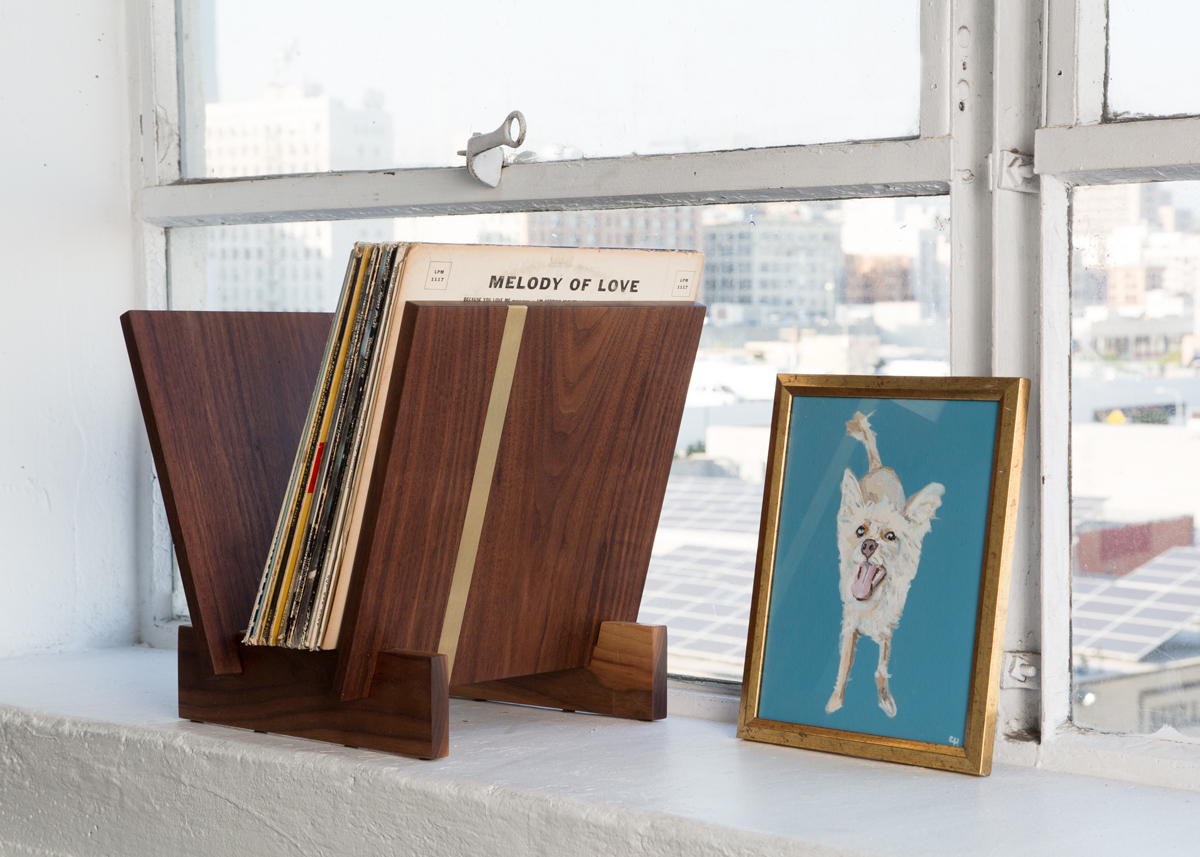
Tabletop storage is great for a small collection or for your latest grabs if you have the counter space.
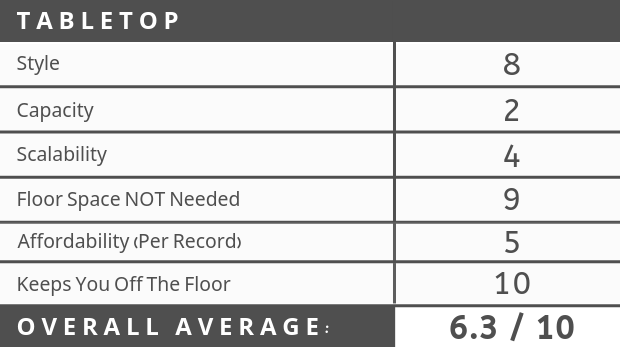
Tabletop units are basically bookends that prop your records upright on a shelf or console. Designs range from brass wire letter holders to wooden cradles. They hold between 20-40 records, and are generally have the lowest price-point of any of the options here ($30-$50), making them attractive options for smaller collections or just to hold a few favorites next to your player. Because they require countertop space, though, they are less ideal for growing collections.
Good Options: Yuval Tzur Design, The Groovy Needle, Hudson Hi-Fi
Crates
Crates are just boxes with openings on the top. They typically hold 40-60 records each. Vinyl crates allow you to move your records around relatively easily, and are generally pretty cheap: around $50 even for artisan products. The drawbacks are style and scaleability. Even high quality crates will look like a little thrown together in your house, especially if you have more than a few. And while an individual crate does not take up much room, multiple crates can take up a decent amount of floor space.
Good Options: Symbol Audio, Stones Throw Records, Wood Dog Studios
Stackable Cubes
Stackable cubes are like crates, except that the face, not the top, is open. Capacity is similar (40-60 records), but because they stack, they can be arranged and deployed differently . That means you can expand your storage fairly painlessly while minimizing the footprint of additional units. Cubes are also fairly affordable. You can find really inexpensive ones at big box stores, while cubes with higher quality materials and workmanship will run you $100-$200.
Examples: Legatus Furniture, iCube, Simple Wood Goods
Wall Shelves

Wall-mounted units are meant to be attached to your wall. Unlike crates or cubes, which generally have similar designs across producers and differ mostly in the details, wall mounted units come in a variety of materials, designs and configurations. They are often front-facing, allowing you to display the album art of one or two of your favorite records. Because of their limited capacity, typically holding between 10-30 records, wall mounted options are usually more for display than storage. It is relatively easy to add additional capacity. The downside is that you have to install them.
Good Options: Copper Works, Hudson Hi-Fi, Suburban Woods, Deep Cut Flip Shelves, Deep Cut Wall Cubes
Consoles
Consoles are larger pieces of furniture that can hold 250-500 records. There are many companies that make units designed specifically for records and turntables. These are some of the most stylish pieces of furniture you will find, with drawers that swing down, for instance, rather than sliding open, or wells that that make record covers partially visible. However, this style doesn't come cheap. Pound-for-pound, this is the most expensive vinyl storage you will find ($500 to several thousand dollars). And while they have a decent amount of capacity or a relatively small footprint, if you run out of room, adding a second console is daunting.
Good Options: Dovetail Storage Cabinet, Atocha, Dual, Symbol Audio
So How Do These Record Storage Options Compare?

What’s your best bet?
Bottom line, it depends on your circumstances. How big is your place? How much room do you want to dedicate to your record set up? Is it a "main event" or a sideshow? Is your collection going to grow? How quickly? Is design and aesthetic the most important part? Or is it about quantity and utility? The answer to those kinds of questions will dictate the answer for you. But we think one solution is, in fact, best:
OUR PICK: Wall-Mounted Cubes and Racks
How convenient. The “best'“ option is the one we make and sell. Well actually, it is the reverse. We make and sell our products because they are what we were looking for but couldn’t find. We did this evaluation for ourselves when we were looking for ways to store and display our record collections. We wanted something that looked nice and used good materials. We wanted it at eye-level so we would not have to crouch down to browse. We wanted to be efficient with floor space. We wanted storage to be able to grow with our collections. We couldn’t find anything that checked all of those boxes, so we made them ourselves. Curious about the origin story? Read more here.
In Conclusion
When thinking about how to store and display your records, there is no one-size-fits-all and needs tend to change over time. To start though, think about things like:
-
How important will this be in the design and aesthetic of the room?
-
How much space and what kind (floor, wall, existing furniture surfaces, etc.) do I have to work with?
-
How fast is my collection likely to grow? What will I do if and when I need more space?
-
Am I looking to get bang for buck, or do I want premium, story, etc.
-
What am I willing to spend and when (e.g. all at once? over time as my needs grow?)
Answer those questions, prioritize them, and you’re shortlist of options will become clear. More and more people are getting turntables (if you need help with your set up, check out our guide on where to start). With this continued growth in popularity of vinyl, there are lots of storage and display options coming out all the time, whether they are vinyl-specific or re-purposed. It’s a great time to be into records.
How do you store your records? What are some favorite options you’ve come across? Let us know!
Leave a comment
Comments will be approved before showing up.
Also in Blog: Deep Cuts

20 Album Covers Perfect For Displaying On The Wall
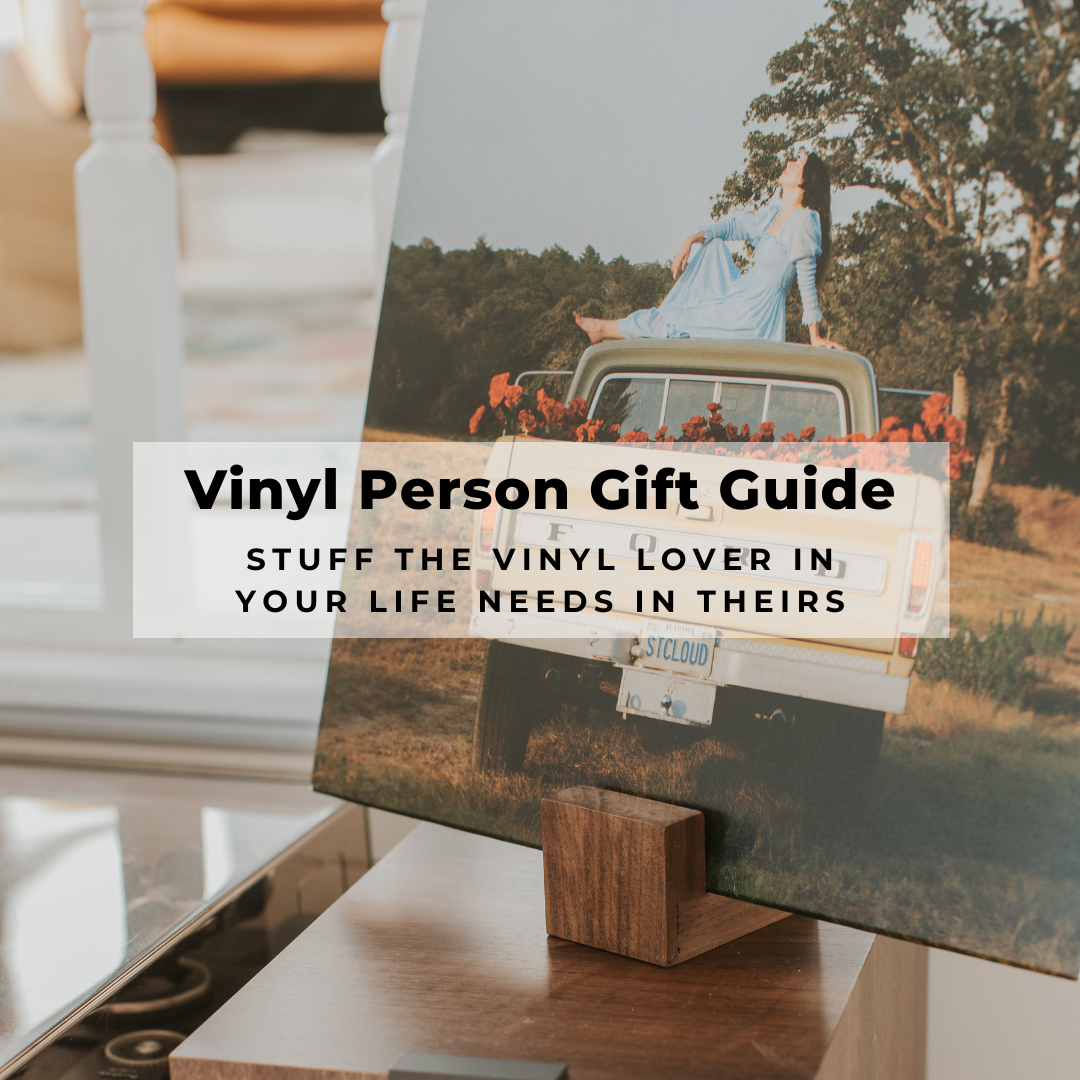
Our 2023 Vinyl Lovers Gift Guide




